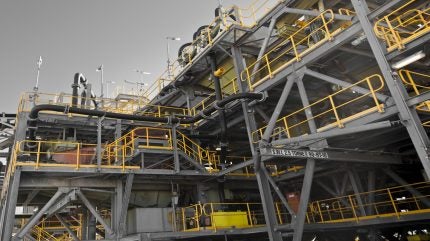Sign up for daily news updates from CleanTechnica on email. Or follow us on Google News!
According to Yale Climate Connections, burning fuel to create motion wastes a lot of energy, most of it as heat. In fact, cars and trucks powered by internal combustion engines are only about 20 percent efficient, meaning just one fifth of it is actually used to move them forward. In other words, four fifths of the energy contained in a gallon of gasoline does nothing but add heat and greenhouse gasses to the atmosphere. Even a coal fired power plant is less wasteful than an internal combustion engine.
Let’s think about that for a moment. Think of the energy required to drill for and extract crude oil from beneath of the surface of the Earth. Then think about the energy needed to transport it to refineries and turn some of it into gasoline. Consider the energy needed to distribute that gasoline by pipelines and trucks to gas stations.
Then stop to consider that 80 percent of the energy contained in that gasoline is just pissed away because that’s the way it has always been and people like the convenience of motor vehicles. Does that make any sense? Is convenience a sufficient reason to destroy the Earth’s ability to support life as we know it? You would be amazed to learn how many people would say yes to that question.
The US today consumes about 8.9 million barrels — 375 million gallons — of gasoline. And yet 300 million gallons does no useful work and is wasted — every day of the week, 365 days a year. We wouldn’t open a gallon of milk and pour most of it down the drain or buy a box of corn flakes and dump most or it into the trash. That would be stupid. Yet we pay $3 dollars for a gallon of gas but only get 75 cents worth of benefit from it. And we call ourselves homo sapiens — the smart ones! Sheesh.
Electric Cars Are More Efficient
By contrast, almost 90 percent of the energy stored in the batteries of electric cars is used to move them forward. Because they don’t burn fuel, there is no thermodynamic penalty for converting heat to motion. Also, electric cars can recapture some of that energy during deceleration through a process known as regenerative braking. That’s when the electric motor that powers an EV turns into a generator when the driver lifts off the accelerator pedal, sending electrons back to the battery to be stored for later use.
As efficient as electric cars are, the process that generates the electricity needed to charge them is not. Generators powered by coal, oil, or methane gas use a complex process that burns fuel to create steam that spins a turbine that generates an electrical current. Burning any type of fuel to make electricity ends up releasing the majority of the energy in the fuel as unused heat.
Despite the major energy losses, a power plant is still more efficient than a car’s engine. Recall that an internal combustion engine loses around 80% of the energy that goes into it. A coal-burning power plant loses around 68% of its energy. Thus, an EV powered purely by coal still uses less energy than a car powered by gasoline. Methane gas power plants are more efficient than coal power, so an EV charged with electricity from methane gas uses about half as much energy as a similar car powered by gasoline.
The math gets more encouraging when you consider the efficiency of renewable energy. Not only do wind, solar, and hydropower reduce pollution, but they also shrink the overall energy demand because there is no energy lost in the process of burning fuel to create motion. Less energy is needed simply because so much less is wasted.
A wind turbine uses no fuel to spin and make an electrical current, so it doesn’t produce emissions or waste heat. The process is so simple that there’s basically not much opportunity for energy to be lost. A hydroelectric dam uses water to spin the turbines instead of air. A solar panel doesn’t have any spinning parts. It just converts the sun’s energy into electrical current. The result is that, when the efficiency of electric cars is combined with the elimination of energy losses from the thermal generation of electricity, electric cars powered by renewable energy are nearly four times as efficient as conventional cars.
Thermal Generation Versus Renewables
Electricity is generated from a variety of sources. Some are efficient and others much less so. By looking at the specific blend of electricity sources generated in each state, it’s possible to estimate how much energy can be saved by swapping traditional gasoline-powered cars and trucks for electric equivalents in those states.
The more efficient the electricity generation, the less energy is needed. States like South Dakota, Idaho, and Washington use mostly renewables in their electricity portfolios and little to no combustion-based electricity. Thus, driving an EV requires about 70% less energy than a gasoline vehicle in those states.
At the other end of the spectrum is West Virginia, where over 90 percent of the electricity comes from burning coal. Even in this worst case scenario, electric cars still uses about 33 percent less energy than gasoline. EVs charged in West Virginia also reduce carbon pollution by 30 percent.
On average across the U.S., swapping a gasoline-powered vehicle for an EV will lower the energy needed for driving by about 47% according to Yale Climate News. That number will increase in the future as renewable energy replaces thermal generating sources. The Yale research also points out that besides lowering emissions and fighting climate change, using less energy overall is a win for land use, air and water pollution, and environmental justice, while also lowering the cost of driving for everyone.
The Takeaway
The Yale Climate News report does not include the carbon impact of manufacturing cars, both conventional and electric. Studies have shown that electric cars do have higher initial emissions due to the greater amount of energy needed to make batteries. That initial carbon debt is reduced and eventually eliminated based on the greater efficiency of electric cars once they are placed in service.
There is no free lunch. All manufacturing creates carbon emissions. The issue is whether human civilization can continue wasting most of the energy consumed in driving from place to place either for personal transport or for business purposes. It should be intuitively obvious to the most casual observer that pillaging the Earth for fossil fuels and then wasting 80 percent of the energy in those fuels is idiotic. We have to do better and electric transportation is the way to do that — until cars powered by pixie dust and unicorn farts become available.
It should be shocking that we waste so much energy while the Earth is heating up because of such profligate human activity. And yet the auto industry and the fossil fuel companies are desperate to convince people that electric cars are bad for society. The latest scary headline is that electric cars are so heavy that our system of guard rails along our highways is inadequate to contain them.
Here’s the truth. A Cadillac Escalade can weigh over 6000 lbs. A Ford F-150 checks in between 4300 and 5800 lbs. A Tesla Model Y tips the scales at 4400 lbs. You can believe deliberate lies or you can go with facts. And the facts are that conventional cars are huge energy hogs that have no place in an overheating world.
Have a tip for CleanTechnica? Want to advertise? Want to suggest a guest for our CleanTech Talk podcast? Contact us here.
Latest CleanTechnica TV Video
I don’t like paywalls. You don’t like paywalls. Who likes paywalls? Here at CleanTechnica, we implemented a limited paywall for a while, but it always felt wrong — and it was always tough to decide what we should put behind there. In theory, your most exclusive and best content goes behind a paywall. But then fewer people read it!! So, we’ve decided to completely nix paywalls here at CleanTechnica. But…
Thank you!
CleanTechnica uses affiliate links. See our policy here.




.jpg)